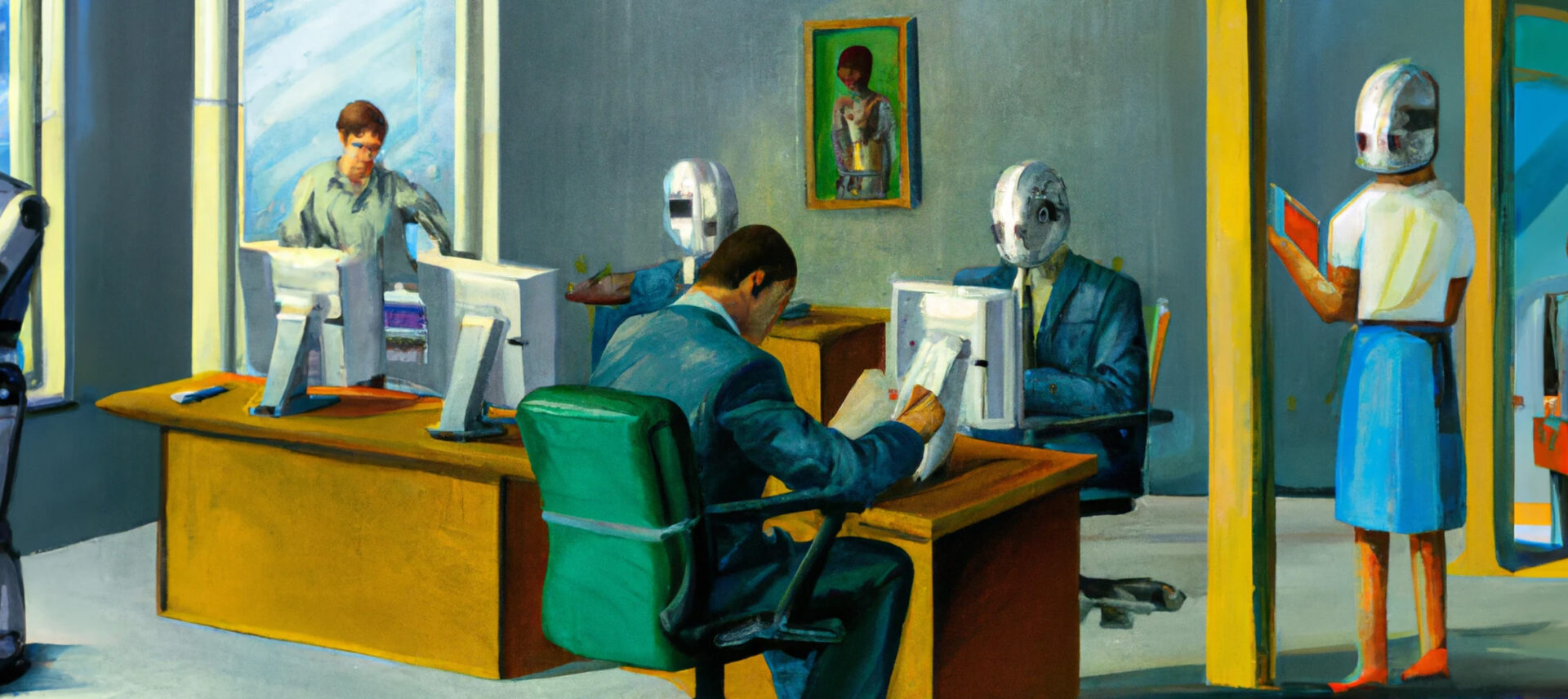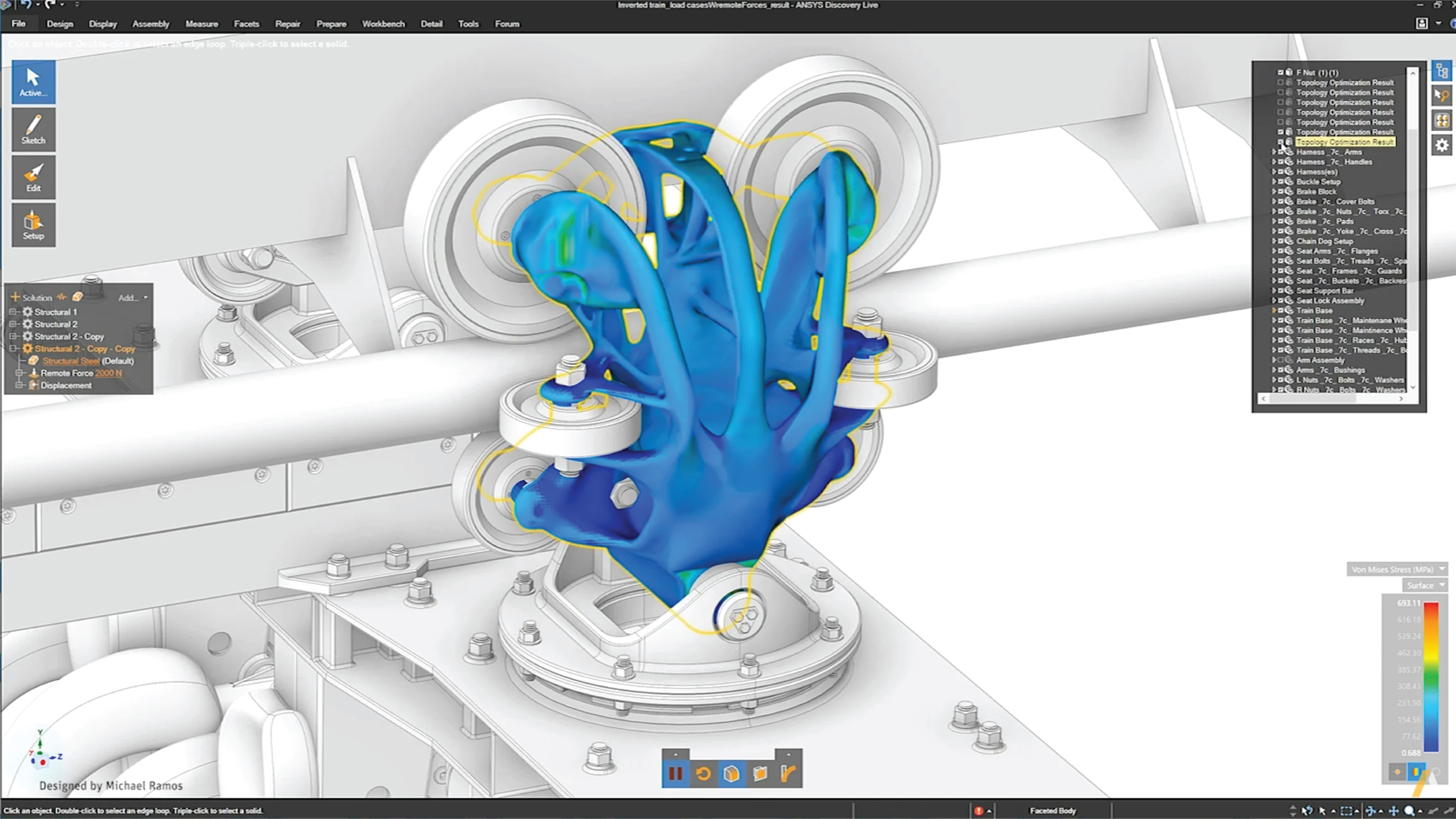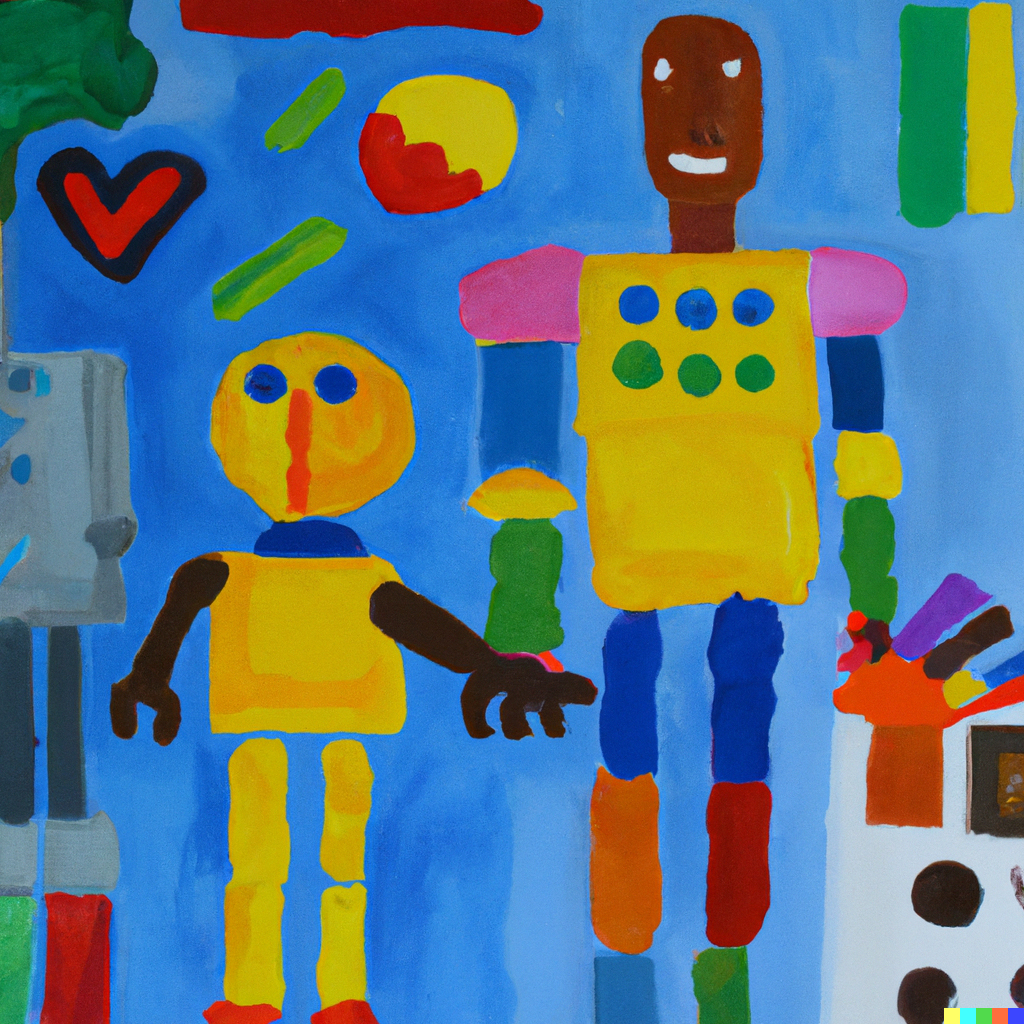
Article
Hey AI, Bring on the Disruption in Product Development. We’re Ready.
Yep, it’s another article about AI. But product leaders need to understand how artificial intelligence could improve every phase of the development process.
The buzz around AI has reached a fever pitch in recent weeks, and it’s clear artificial intelligence will disrupt a variety of industries, including product development, in the months and years to come.
But what will that look like exactly? Will designers, engineers, and marketers be replaced by bots? Is the market value of our human-centered work about to plummet? Will we all suddenly be expected to produce ridiculous volumes of output due to the perception that AI can speed up (or independently perform) the more arduous parts of our jobs?
As questions like these swirl around, some companies will probably try to ignore the ChatGPT-generated writing on the wall. But in order for your product development roadmap to compete in this rapidly changing environment, you can’t afford business as usual.
We happen to think the possibilities around AI are exciting, not scary — and we want to help you make the most of emerging technology as it becomes available. To that end, here’s how we predict AI will impact each phase of the product development process. Let’s go.
AI in the Strategy Phase of Product Development: A Wider Net, Sharper Research-Driven Insights
The best way to ensure a product’s market success is to invest in a robust strategy phase. This is the part of the process when the product development team can challenge preconceived notions and ensure they’re designing something users actually want.
When companies ask us to skip over or truncate this phase, it’s usually because they don’t have the time or money to devote to market research. And that’s understandable. It can cost thousands of dollars and take many hours to gather feedback. Even with an adequate budget and timeline, there are still only so many interviews and surveys a small team can manage. That means even in the best circumstances it’s difficult to get the breadth and depth of intel each product deserves.
Enter AI.
As this technology evolves, it will bring the potential to cut costs and vastly increase strategic scope by:
- Broadening the reach of secondary research
- Evaluating primary research data to elevate commonalities and key takeaways
- Sifting through competitor product info (like customer reviews) to identify opportunities to improve upon competitive products
- Mimicking social media algorithms to zero in on what users respond to
- Showing iterative versions of products to get to the heart of users’ wants and needs in the form of virtual focus groups
The efficiencies AI can unlock will make it even easier for all companies to conduct the thorough strategy phases that are so critical for product success. Although some of these applications are not yet available on the market, all companies would be wise to begin conversations about how they may leverage them in the future.
Human Research Will Still Be Necessary
AI won’t be able to do everything a human does in the strategy phase — at least not any time soon. After all, AI lives in a cyber world of 0’s and 1’s. If you’re designing a tangible product, you’ll still need primary research from users who can provide insight into how physical items feel and function.
Furthermore, human researchers bring not-easy-to-replicate expertise to their conversations with respondents. We’ve seen first-hand that some research participants talk just because they think they should. They say things they don’t mean or they speak out of turn. By contrast, others offer useful feedback that is thoughtful and astute. They have their ear to the ground within their industry and provide observations that steer our products in the right direction. Human researchers understand tone and nuance whereas AI can’t discern which responses are valid and which are utter nonsense.
It all comes down to this: AI can seem pretty darn human — but it’s not. To design products for real people, we should absolutely use AI the same way we’d reach for any tool in our toolbox. But our industry will still need the unique insight, curiosity, empathy, reasoning, and creativity that human intelligence brings to the table.
AI in the Concept Phase: A Fresh Approach to Creativity and Brainstorming
Designers look to a number of places for creative inspiration, but we all tend to pull from the same sources. And as a result, we end up seeing hundreds of ideas that all look similar.
AI offers something new. Using image-generating software like Dall-E 2, we’re now able to craft more dynamic and customizable images that look different from anything on the market to date. Even better, we can do it in seconds. The speed of use and visual “wow factor” can be enough to help product development teams break free from tired molds and reach new heights of innovation.

AI may also help us to quickly iterate on existing concepts. For example, imagine being able to scan a napkin sketch into software and have it generate a dozen or more iterations.
There’s just one problem — and it’s a big one. AI’s sky’s-the-limit outputs are fun and truly amazing. But they’re usually not manufacturable, especially if they’ve been generated using free tools still in beta testing. The dimensions, structures, angles, and other features don’t typically stand up to the rigors of production and use.
The good news is there are companies actively working to create trustworthy, subscription-based AI tools that will take manufacturability into consideration. But for now, it’s best to take any AI-produced concepts with a huge grain of salt.
Let’s Brainstorm About Brainstorming
We also see the potential to use AI in concept-phase brainstorming sessions. Using M3’s approach as an example, we already:
- Embrace a cross-disciplinary approach and bring designers, engineers, and marketers into the room to get a variety of perspectives
- Avoid skipping straight to solution mode and instead spend time coming up with as many visionary, mild-to-wild ideas as possible
- Use common objects, flashcards, and teardowns of existing products to hatch new ideas
But we think chatbots like ChatGPT3 will take our methodology to the next level. We hope a bot will eventually be able to:
- Accurately provide the perspective of an engineer or manufacturer to supplement the knowledge and bandwidth of our existing team
- Respond to our prompts with outputs that help us consider new angles of a problem
- Give feedback on defective concepts and suggest ways to improve them
To reiterate, we don’t foresee AI replacing humans in the concept phase of development. But it does have tremendous potential to augment our capabilities.
AI in the Development Phase: Warp-Speed Problem Solving and Prototyping
The ability to test prototypes and models using advanced simulations already exists. Where we see AI playing a role is in reviewing the results of testing and making real-time suggestions for improving the product’s performance.
In other words, AI will become the ultimate iterative testing tool: Run the prototype through programs like FEA (finite element analysis) software to test strength, durability, and how the product responds to a variety of external factors; tell the AI the features that worked and didn’t work in the prototype; then ask it to give five (or more) different ways to solve the problem while keeping the rest of the design the same. It’s pretty cool to think about just how much AI could speed up and strengthen the testing and prototyping process.
The development phase is also frequently underscored by another round of user research, meaning all the research tools discussed above can be applied here as well.
AI could also play a key role in generative design by synthesizing long lists of product requirements and constraints from a PRD. It can take engineers and designers many hours to make sense of complex requirement documents and begin generating viable concepts that factor every detail in. AI could get the ball rolling in minutes.

Again, what AI produces may not be manufacturable, but it provides a valuable starting point for humans to work from.
Artificial Intelligence Will Augment Human Intelligence in Product Development
Our predictions around AI all contain an important caveat: Humans aren’t going anywhere. IBM CEO Ginni Rometti puts it this way, “If I considered the initials AI, I would have preferred augmented intelligence [emphasis ours].” She also says “The most important thing for any of us to be in our jobs is curious.”

Taken in tandem, these messages remind us that we don’t need to panic about the changes on the horizon. Rather, it’s up to us as creatives and visionaries to make the most of this inflection point in product development.
AI may soon herald a seismic shift in the way you approach your work. But that means it also offers an unprecedented opportunity to propel your product development roadmap forward. Just as CAD revolutionized what we used to do with pen and paper, AI stands to transform the entire product development process in exciting ways.
Are you ready for the coming change? You don’t have to figure it out alone. Let us help.





